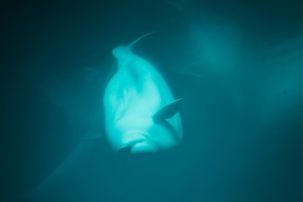Lesson summary
In this activity students role-play animals of the ocean and are asked to think about how these creatures interact with each other, and how these interactions are important to the life and health of the ocean.
Learning intentions:
Students will...
- understand that marine animals interact with other animals and with the reef
- recognise that marine creatures play an important role in keeping our oceans healthy.
Lesson guides and printables
Lesson details
Curriculum mapping
Australian Curriculum content descriptions:
Year 1 Science:
- Living things live in different places where their needs are met (ACSSU211)
- Use a range of methods to sort information, including drawings and provided tables (ACSIS027)
Year 2 Science:
- Use a range of methods to sort information, including drawings and provided tables (ACSIS040)
- Living things grow, change and have offspring similar to themselves (ACSSU030)
Syllabus Outcomes: ST1-4WS, ST1-10LW, ST1-11LW.
Time required: 60 mins
Level of teacher scaffolding: High – facilitate activity.
General capabilities: Critical and creative thinking.
Cross-curriculum priority: Sustainability OI.2.
Resources required
- Open space
- White or blackboard
- Art materials
Additional info
This lesson has been created in partnership with WWF-Australia. Earth Hour is the world’s largest community-driven climate change campaign. At the centre of Earth Hour is switching off lights to show a commitment to taking action.
Thousands of teachers use Earth Hour’s education program to enrich their curriculum and provide pathways for young people to create change in their world.
For the most up to date Earth Hour dates, times, and events, check here.


Welcome back!
Don't have an account yet?
Log in with:
By signing up to Cool.org you consent and agree to Cool's privacy policy to
store, manage and process your personal information. To read more, please see
our privacy policy here(Opens in new tab).
Create your free Cool.org account.
Many of our resources are free, with an option to upgrade to Cool+ for premium content.
Already have an account?
Sign up with:
By signing up to Cool.org you consent and agree to Cool's privacy policy to
store, manage and process your personal information. To read more, please see
our privacy policy here(Opens in new tab).